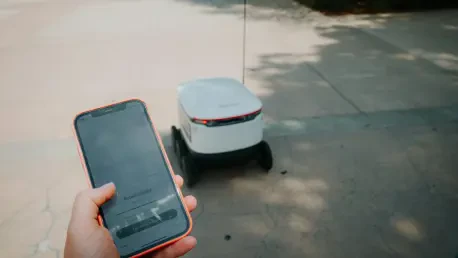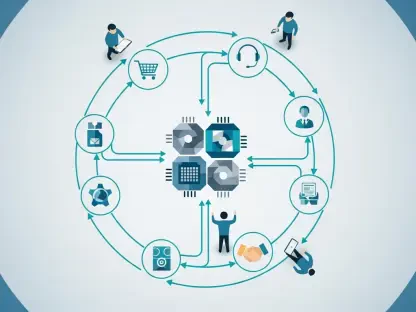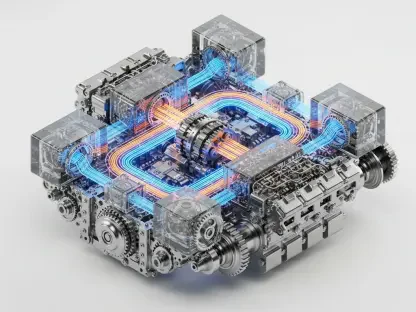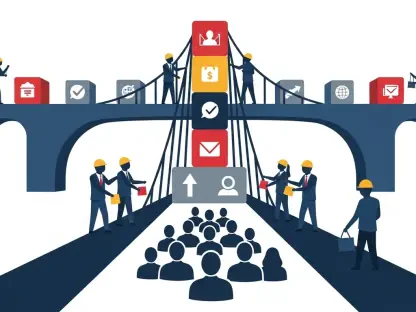In an era where urban centers face escalating challenges from natural disasters to infrastructural breakdowns, a staggering 66% of global cities report inefficiencies in emergency response due to fragmented technology systems, highlighting a critical gap in operational effectiveness. This alarming statistic underscores how smart cities often leave citizens vulnerable when coordination is most needed during crises. AI interoperability emerges as a game-changing solution, promising to unify disparate urban systems into a cohesive, responsive framework. This review delves into the transformative potential of interoperable AI, exploring its core features, real-world impact, and the hurdles it must overcome to redefine urban resilience in times of crisis.
Core Features of AI Interoperability in Urban Settings
AI interoperability stands at the forefront of urban innovation by enabling seamless communication across diverse systems such as traffic management, emergency services, and environmental monitoring. Unlike traditional smart city technologies that operate in isolation, interoperable AI creates a networked ecosystem where data flows effortlessly between platforms. This integration ensures that cities can respond to crises with speed and precision, minimizing delays caused by disconnected tools and protocols.
A key pillar of this technology is its ability to break down silos that have long plagued urban governance. By standardizing data formats and communication protocols, interoperable AI allows agencies to share real-time insights, fostering collaboration during high-stakes scenarios. For instance, a unified system can instantly relay flood warnings from environmental sensors to emergency responders, optimizing resource allocation and saving critical time.
The adaptability of interoperable AI further enhances its value, as it can scale to meet the unique needs of different cities, from sprawling metropolises to smaller municipalities. With 83% of North American cities now adopting AI solutions, the demand for systems that can integrate with existing infrastructure is clear. This flexibility positions interoperability as a cornerstone for building resilient urban environments capable of withstanding diverse challenges.
Performance and Innovations in Agentic AI
At the heart of interoperable systems lies agentic AI, a groundbreaking advancement that moves beyond mere automation to independent decision-making. Unlike conventional smart technologies that follow pre-programmed rules, agentic AI can anticipate urban needs, set priorities, and coordinate actions across disconnected platforms. This capability proves invaluable during crises, where split-second decisions can determine outcomes for entire communities.
Performance metrics highlight the growing impact of agentic AI, with adoption rates climbing steadily among urban planners. Reports indicate that 74% of smaller cities have begun integrating such systems, recognizing their potential to transform fragmented operations into a unified response mechanism. The ability of agentic AI to learn from past events and adjust strategies in real time offers a level of resilience previously unattainable with static tools.
Recent innovations in this space also focus on human oversight, ensuring that autonomous decisions align with public interest. By embedding accountability into its framework, agentic AI addresses concerns about unchecked automation, striking a balance between efficiency and ethical responsibility. This dual focus on performance and governance marks a significant leap forward in how cities manage complexity and uncertainty.
Unified AI Architectures: The Nervous System of Omni Cities
Unified AI architectures, such as those pioneered by forward-thinking models like Omni Cities, represent the backbone of next-generation urban ecosystems. These architectures integrate an array of technologies—drones, robots, and critical infrastructure—under a single, cohesive framework, often described as a city’s “nervous system.” This integration enables real-time coordination, ensuring that every component of an urban environment operates in harmony during emergencies.
Technical evaluations of unified architectures reveal their strength in enhancing situational awareness across departments. For example, a centralized AI system can direct traffic flow, dispatch emergency units, and monitor air quality simultaneously, reducing response times by eliminating redundant processes. Such efficiency is vital for cities aiming to evolve into adaptive, equitable spaces where safety remains paramount.
The emphasis on scalability within these architectures also ensures that cities of varying sizes can adopt the technology without overhauling existing systems. With human oversight embedded as a core principle, unified AI frameworks prioritize transparency and democratic governance, addressing potential risks of over-reliance on automated solutions. This balance of innovation and accountability underscores their role in shaping the future of urban resilience.
Real-World Impact and Case Studies
The practical deployment of AI interoperability showcases its transformative power in real-world settings, with cities like Los Angeles leading the charge. Through data-sharing initiatives spanning over 500 datasets across 20 departments, Los Angeles has optimized emergency response by enabling seamless collaboration between agencies. During recent crises, this system allowed for rapid resource deployment, significantly improving outcomes for affected communities.
Beyond emergency management, interoperable AI enhances everyday urban governance by streamlining service delivery. In various municipalities, integrated systems have synchronized traffic signals with public transit schedules, reducing congestion and improving resident satisfaction. These applications demonstrate how interoperability extends its benefits from crisis scenarios to routine operations, creating a more livable urban experience.
The ripple effect of such implementations is evident in the growing trend of cross-agency partnerships. By breaking down vertical silos, interoperable AI fosters a culture of shared responsibility, ensuring that cities can tackle multifaceted challenges with unified action. These case studies provide compelling evidence of the technology’s capacity to redefine how urban centers function under both normal and extreme conditions.
Challenges Facing Adoption and Implementation
Despite its promise, AI interoperability faces significant hurdles that could slow its widespread adoption. Technical challenges, such as integrating legacy systems with modern AI platforms, pose a barrier for many cities with outdated infrastructure. This complexity often requires substantial investment and expertise, which may be out of reach for smaller or underfunded municipalities.
Ethical concerns also loom large, particularly around data bias and privacy risks. If AI systems are trained on skewed datasets, they risk perpetuating inequities, potentially failing vulnerable populations during critical moments. Ongoing efforts to conduct bias audits and implement diverse data sources aim to mitigate these issues, but achieving fairness remains an uphill battle in many contexts.
Regulatory barriers further complicate the landscape, as the absence of standardized governance frameworks can hinder interoperability across regions. Developing universal protocols that balance innovation with accountability is essential to ensure equitable implementation. Addressing these challenges will require concerted efforts from technologists, policymakers, and community stakeholders to build trust and maximize the technology’s potential.
Verdict on AI Interoperability’s Role in Urban Futures
Looking back, this exploration of AI interoperability revealed a technology that stands as a beacon of hope for smart cities grappling with crisis-induced vulnerabilities. Its ability to unify fragmented systems, powered by agentic AI and unified architectures, marks a turning point in urban resilience. Real-world successes, such as those in Los Angeles, underscore its capacity to enhance safety and governance when implemented thoughtfully.
Moving forward, the focus must shift to actionable strategies that address lingering technical, ethical, and regulatory challenges. Collaborative initiatives between cities and tech innovators should prioritize the development of standardized integration tools to ease adoption for resource-constrained municipalities. Simultaneously, robust ethical guidelines must be established through public dialogue to ensure that AI serves all citizens equitably.
The journey ahead demands a commitment to continuous improvement, with pilot programs and cross-city knowledge sharing paving the way for scalable solutions. By investing in interoperability as a foundational principle, urban leaders can build cities that not only withstand crises but also thrive as adaptive, inclusive ecosystems. This technology, if nurtured with care and foresight, holds the key to a safer, more responsive urban future.









